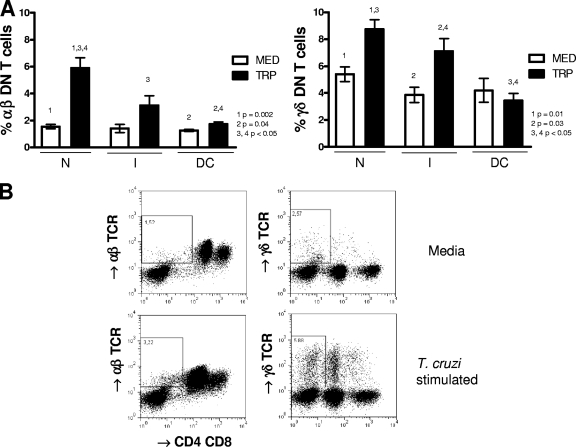FIG. 1.
T. cruzi activation of peripheral blood cells induces expansion of αβ and γδ double-negative (CD4− CD8−) T cells. Whole blood cells from noninfected controls (N), indeterminate chagasic patients (I), and dilated cardiac chagasic patients (DC) were incubated overnight as described in Materials and Methods with either medium alone (MED) or with live T. cruzi parasites (TRP) and then analyzed for the frequency of αβ and γδ CD4− CD8−T cells using flow cytometry. Panel A shows the average frequencies for each group ± standard deviations. The numbers of individuals in each group were as follows: N, seven; I, seven; and DC, five. Statistical significance is indicated in each graph, with differences between groups indicated by common numbers. Comparisons between groups were performed using a Tukey-Kramer comparison of all pairs, and comparisons within groups (MED versus TRP) were performed using a paired t test, as described in Materials and Methods. All patients were meticulously classified based on clinical criteria as described in Materials and Methods. Panel B shows representative dot plots from an indeterminate patient and gating for analysis of αβ and γδ CD4− CD8−T cells. Both anti-CD4 and anti-CD8 antibodies were conjugated with CyChrome, allowing identification of the DN T cells using specific antibodies against both αβ and γδ T-cell receptors conjugated with FITC. The gates used for determining the percentage of DN T cells and further analysis of cytokine expression in the DN T-cell populations are shown.

